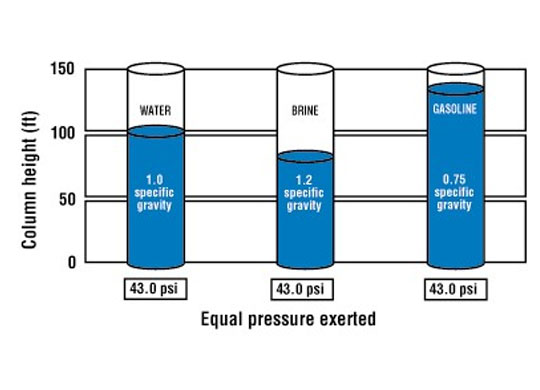Liquid Pump Installation Information

Relation of Pressure to Elevation
In a static liquid (a body of liquid at rest), the pressure difference between any two points is in direct proportion only to the vertical distance between the points.
Calculate this pressure difference by multiplying the vertical distance by the density (or vertical distance x density of water x specific gravity of the fluid).
Static Head
The hydraulic pressure at a point in a fluid when the liquid is at rest.
Friction Head
The loss in pressure or energy due to frictional losses in flow.
Discharge Head
The outlet pressure of a pump in operation.
Total Head
The total pressure difference between the inlet and outlet of a pump in operation.
Suction Head
The inlet pressure of a pump when above atmospheric pressure.
Suction Lift
The inlet pressure of a pump when below atmospheric pressure.

Effects of Specific Gravity
Specific gravity is an important factor to consider when sizing a pump. The specific gravity of your liquid can affect the output pressure of a pump a heavier liquid requires greater force than water (or a lighter liquid) to be lifted an identical vertical height.
The graph below compares the column heights needed to exert an equal pressure for liquids having different specific gravities. A 100-ft column of water (specific gravity of 1.0) exerts a pressure of 43.0 psi, while an 83-ft column of brine (a heavier liquid) and a 133-ft column of gasoline (a lighter liquid) are needed to exert the same pressure.



